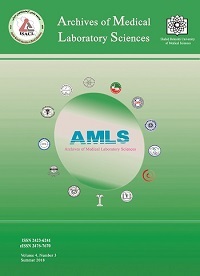Evaluation of the Housekeeping Genes; β‐Actin, Glyceraldehyde‐3‐Phosphate‐Dehydrogenase, and 18S rRNA for Normalization in Real‐Time Polymerase Chain Reaction Analysis of Gene Expression in Human Adipose Tissue
Archives of Medical Laboratory Sciences,
Vol. 4 No. 3 (2018),
28 December 2019,
https://doi.org/10.22037/amls.v4i3.26269
Background: Several studies suggested that beta-actin, glyceraldehyde-3-phosphate dehydrogenase (GAPDH), and 18S rRNA are expressed constitutively and contribute to the fundamental reference actions essential for cell viability and maintenance. However, there are inconsistency in this regard. Hence, we aimed to evaluate the accuracy of these three potential reference genes for Real‐Time quantitative reverse transcriptase‐polymerase chain reaction (qRT‐PCR) application for normalization in two types of human adipose tissues.
Materials and Methods: Subcutaneous and visceral fat tissues were derived from 19 healthy and 20 obese subjects and RT-qPCR was applied to determine the expression levels of beta-actin, GAPDH, and18S rRNA.
Results: The gene expression level of beta-actin, GAPDH, and 18S rRNA was essentially the same in the subcutaneous and visceral fat tissues of all participants (P>0.05). Hence, all considered housekeeping genes displayed high expression stability and the analysis revealed that normalization to all of these three housekeeping genes gave a result that satisfactorily reflected the acceptable mRNA expression levels in adipose tissues.
Conclusion: Collectively, our findings suggest of beta-actin, GAPDH, and18S rRNA as reference genes applicable in human adipose tissue in the context of obesity.
